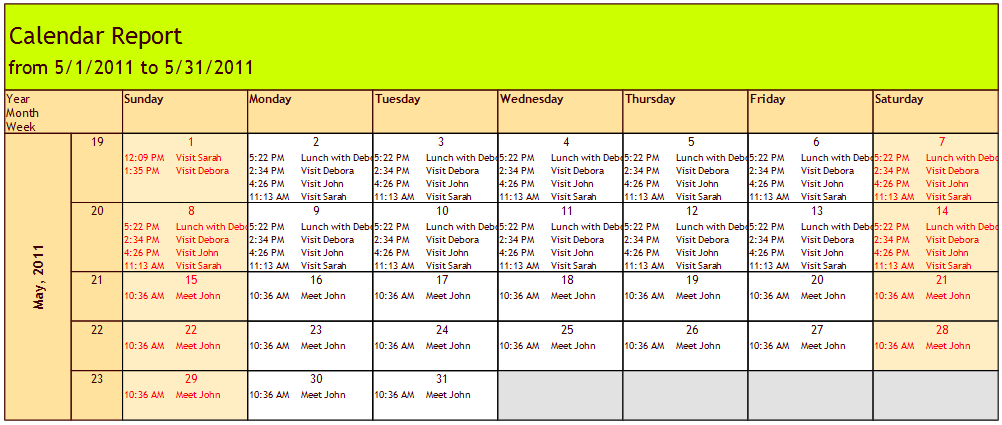Creating a Calendar Report with Telerik Reporting
An interesting question that we frequently are being asked is: How to create a calendar report? Generally, the requirement is to create a report showing appointments and bookings just as in a month planner calendar/scheduler. When you think about it, tracking tasks and events when displayed in a calendar is instant - the users have all the information they need into a well known layout that allows to easily analyze tasks and projects. It is no wonder that our clients request this type of report. The easiest way to prepare a dynamic calendar report is to utilize our flexible crosstab/table/list item.
Due to the crosstabs data driven nature the calendar is generated thoroughly on CalendarDataSource data.
public class CalendarDataSource { public IEnumerable<DateTime> GetDaysBetween(DateTime startDate, DateTime endDate) { // truncate the time part var date = startDate.Date; endDate = endDate.Date; while (date <= endDate) { yield return date; date = date.AddDays(1); } } }
To format the crosstab in calendar format we have used a few helper user functions:
public static DateTime GetFirstDayOfMonth(DateTime value) { return new DateTime(value.Year, value.Month, 1); } public static DateTime GetLastDayOfMonth(DateTime value) { return new DateTime(ReportingCalendarvalue.Year, value.Month, 1).AddMonths(1).AddDays(-1); } public static int GetWeekOfYear(DateTime value) { var firstDayOfWeek = CultureInfo.CurrentCulture.DateTimeFormat.FirstDayOfWeek; return CultureInfo.CurrentCulture.Calendar.GetWeekOfYear(value, CalendarWeekRule.FirstDay, firstDayOfWeek); } public static int GetDayOfWeek(DateTime value) { var firstDayOfWeek = (int)CultureInfo.CurrentCulture.DateTimeFormat.FirstDayOfWeek; var dayOfWeek = (int)value.DayOfWeek; return (dayOfWeek + 7 - firstDayOfWeek) % 7; } public static string GetDayOfWeekName(DateTime value) { var dayNames = CultureInfo.CurrentCulture.DateTimeFormat.DayNames; return dayNames[(int)value.DayOfWeek]; } public static bool IsWeekend(DateTime value) { return (value.DayOfWeek == DayOfWeek.Sunday || value.DayOfWeek == DayOfWeek.Saturday); }
Here is how the calendar report looks like:


About the Author
Stefan Tsokev
Stefan’s main interests outside the .NET domain include rock music, playing the guitar and swimming.
Comments
Comments are disabled in preview mode.
